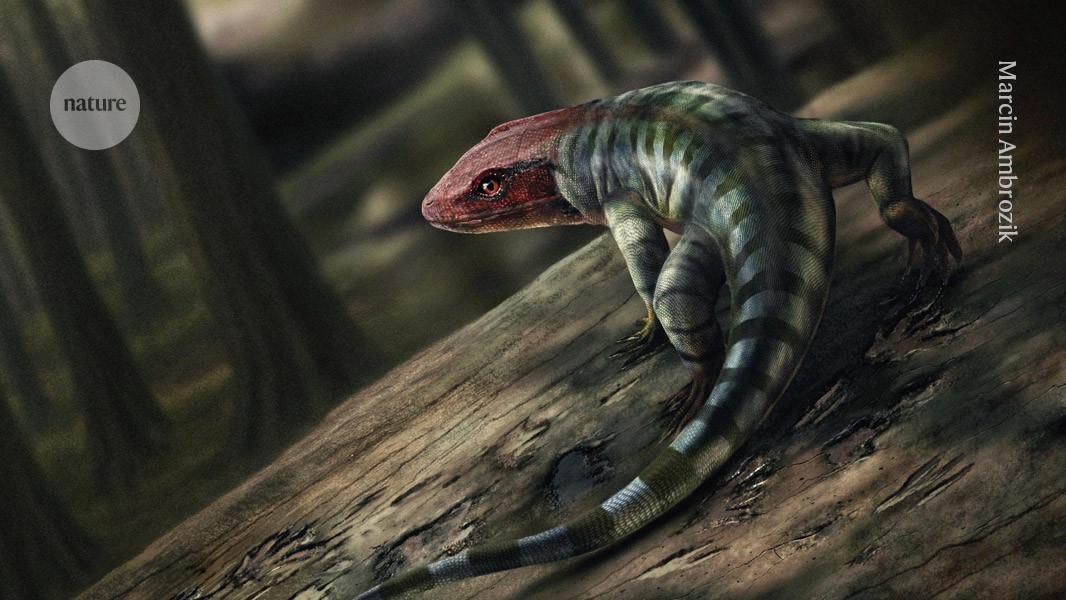Fossil claw marks show reptiles arose far earlier than thought

Tracks in Australia appear to be the earliest known amniote prints — a group that includes reptiles, birds and mammals

Illustration of an amniote animal thought to have left fossilized claw prints in Victoria, Australia.Credit: Marcin Ambrozik
Fossil claw prints found in Australia were probably made by the earliest known members of the group that includes reptiles, birds and mammals, according to a study published in Nature today1. The findings suggest that this group — the amniotes — originated at least 35 million years earlier than previously thought.
Early amniotes evolved to lay eggs on land, because they were encased in an amniotic membrane that stopped them drying out. Before this study, the earliest known amniote fossils had been found in Nova Scotia, Canada, and were dated to the mid-Carboniferous period, about 319 million years ago. The latest findings suggest that amniotes also existed in the early Carboniferous period, around 355 million years ago.
The discovery also means the last common ancestor between modern amphibians and amniotes such as reptiles and mammals must have existed even further back in time, says co-author, a palaeontologist at Flinders University in Adelaide, Australia. Dating by the team suggests that the groups diverged in the Devonian period, about 380 million years ago.
“This discovery is exciting, and if the tracks have been interpreted the right way, the findings have important implications for our understanding of tetrapod evolution,” says Steven Salisbury, a palaeontologist at the University of Queensland in Brisbane, Australia.
The tracks
The claw tracks were found in a sandstone block on the bank of the Broken River at Barjarg in the state of Victoria, by two co-authors of the paper who are not professional scientists. This area of the river is known as Berrepit to the Indigenous Taungurung people who own the land.
The sandstone block is part of a larger structure that had already been dated to the early Carboniferous on the basis of radiometric and tectonic evidence. Fossilized tracks of aquatic invertebrates and fish found in the same layer were also dated to this time period.
The three sets of tracks in the study have clear footprints with indentations from claws, a feature of reptiles but not amphibians. “Having these hooked claws on the trackways indicates they’re definitely a reptile-like animal,” says Long
There are no marks of dragging bellies or tails, and the authors suggest that the amniotes that left the tracks were able to keep their bodies and tails off the ground while they walked on land. But Salisbury questions that interpretation, because it would mean the animals had developed sophisticated structures for complex locomotion, which would be surprising given how early they are. “It seems more likely that the tracks were made by an animal that was ‘punting’ in shallow water, rather than walking on land,” he says.
Enjoying our latest content?
Login or create an account to continue
- Access the most recent journalism from Nature's award-winning team
- Explore the latest features & opinion covering groundbreaking research
or
Sign in or create an accountdoi: https://doi.org/10.1038/d41586-025-01499-w
This story originally appeared on: Nature - Author:Rita Aksenfeld


















